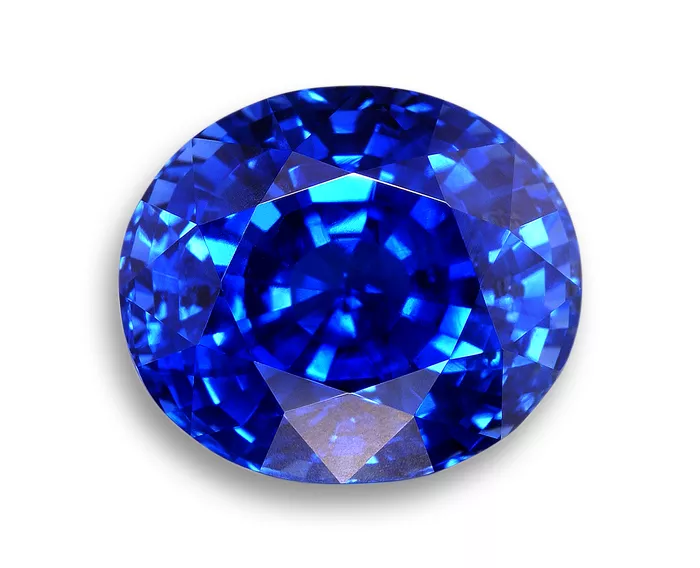Sapphires are among the most precious gemstones in the world. Known for their stunning blue color and remarkable durability, sapphires have captivated the human imagination for centuries. But how much are these exquisite gems actually worth? Determining the value of a sapphire involves considering several factors, including color, clarity, cut, carat weight, and origin. In this article, we will delve into the intricate world of sapphire valuation to understand why these gems can command such high prices in the market.
Understanding Sapphire Value:
Sapphires, like many gemstones, are valued based on the interplay of multiple characteristics. The most important factor contributing to a sapphire’s value is its color. While blue is the most traditional and sought-after color for sapphires, these gemstones can also occur in various other hues, such as pink, yellow, green, and even colorless (known as white sapphires). However, it’s essential to note that not all colors hold equal value, and blue sapphires generally fetch higher prices due to their rarity and association with luxury.
The intensity and saturation of the color also impact a sapphire’s value. Vivid and richly saturated shades of blue are highly desirable, while lighter or less intense colors may be considered lower in value. Additionally, the presence of secondary hues, such as purple or green undertones, can affect a sapphire’s price. Ultimately, the subjective preference of buyers and prevailing market demand play a significant role in determining the worth of a specific sapphire.
Clarity and Cut Considerations:
Apart from color, clarity and cut are crucial factors affecting the value of a sapphire. Like other gemstones, sapphires can contain natural birthmarks known as inclusions. These inclusions are tiny imperfections that can affect the stone’s transparency and overall visual appeal. The clarity grade of a sapphire indicates the presence and visibility of these inclusions. Generally, the fewer and less noticeable the inclusions, the higher the sapphire’s value.
The cut of a sapphire refers to its shape and how well it has been faceted. A well-cut sapphire maximizes the stone’s brilliance, sparkle, and color saturation. While there are various cuts available, the most popular ones for sapphires are oval, cushion, round, and emerald cuts. A skillfully executed cut can significantly enhance a sapphire’s beauty and value.
Carat Weight and Rarity:
Similar to diamonds, sapphires are also measured in carats. Carat weight plays a role in determining a sapphire’s worth, as larger stones are generally rarer and more valuable. However, carat weight alone is not the sole indicator of a sapphire’s value. A smaller sapphire with exceptional color, clarity, and cut can still be more valuable than a larger stone with inferior characteristics.
Origin and Market Factors:
The origin of a sapphire can also influence its value. Sapphires from certain regions, such as Kashmir, Myanmar (Burma), and Sri Lanka (Ceylon), are highly sought after due to their historical significance, exceptional quality, and limited supply. These origin-specific sapphires often command premium prices in the market.
Market factors, including supply and demand dynamics, also play a significant role in determining sapphire prices. Fluctuations in the global gemstone market, changes in consumer preferences, and trends within the jewelry industry can impact the value of sapphires. Additionally, auctions and sales of notable sapphires can set benchmarks and influence pricing trends.
Professional Appraisal and Certification:
To accurately determine the value of a sapphire, it is advisable to seek a professional appraisal from a qualified gemologist or experienced jeweler. These experts assess the sapphire’s characteristics in detail and consider market conditions to provide an informed valuation. Moreover, reputable gemological laboratories, such as the Gemological Institute of America (GIA), issue certificates that provide an independent evaluation of a sapphire’s quality and authenticity.
Conclusion:
Sapphires are prized gemstones renowned for their beauty, rarity, and durability. The value of a sapphire varies based on its color, clarity, cut, carat weight, and origin. Blue sapphires, especially those with intense, vivid hues, tend to command higher prices due to their desirability and scarcity. Factors like origin and market dynamics also influence sapphire worth. To get an accurate assessment of a sapphire’s value, it is recommended to consult a qualified professional who can provide an appraisal backed by expertise and experience. Whether you’re considering buying or selling a sapphire, understanding these valuation factors will help you make informed decisions in the fascinating world of precious gemstones.


